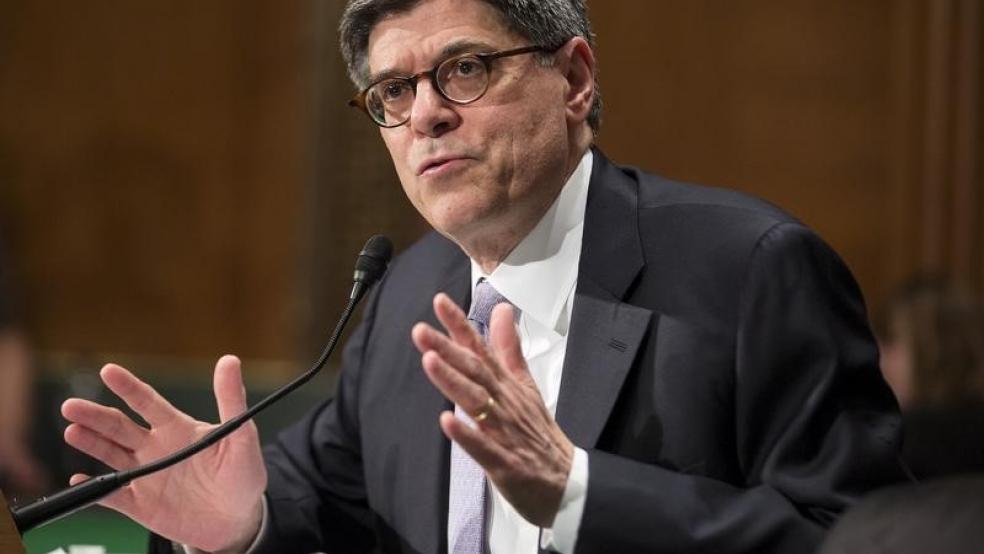One of the Republicans’ biggest fears about the U.S.-Iran nuclear deal is that Iran will suddenly be flush with cash and better able to fund terrorism and attacks on U.S. interests.
With some estimating that Iran stands to gain $100 billion or more from oil sales and assets currently frozen around the world, Senate Foreign Relations Committee Chair Bob Corker (R-TN) told Obama administration officials on Thursday that Iran would go from being “a rogue nation that had a boot on its neck” to a country reaping a windfall from sanctions relief.
Related: Kerry Accuses Critics of Iran Deal of Believing in 'Fantasy'
Proponents of the deal say that it will allow Iran to begin repairing an economy crippled by decades of punishing sanctions that began in 1979, when revolutionaries overthrew the U.S.-friendly government of Mohammad Reza Shah Pahlavi and took American hostages
However, attempting to calculate just how large that windfall of freed-up assets would be is a guessing game at best. During his Senate testimony on Thursday, Treasury Secretary Jack Lew sought to deflate the $100 billion figure as he and other administration officials struggle to sell the Iran nuclear agreement to a highly skeptical Congress.
“We estimate that after sanctions relief, Iran will only be able to freely access around half of these reserves, or about $50 billion,” he testified, seated alongside Secretary of State John F. Kerry and Energy Secretary Ernest Moniz.
Without providing detailed explanation, Lew said that $20 billion of the original $100 billion estimate is committed to projects with China, which cannot be spent for other purposes, while “tens of billions in additional funds” constitute unpaid or “non-performing loans” that somehow must be accounted for by the Iranian government.
Related: Did Iran Negotiate in Bad Faith? That's the Key Question
The broader issue facing the Iranian government, said Rachel Ziemba a senior director for emerging markets with Roubini Global Economics in New York, is that any return to the global financial scene will have to be preceded by a period of “disentangling” the country’s banks and public institutions from the fallout of years of dubious lending practices and general economic stress.
“Iran’s banks are full of a lot of non-performing or under-performing assets … and in this period of greater sanctions and economic contraction, those probably became even less performing,” she said in an interview Friday. “Right now, the banks do not have the capacity to lend to support the real economy.”
“Let's be clear what those assets are,” Lew told members of the Foreign Relations Committee. “It’s not money we are giving to Iran. It’s Iran money that sits in other countries that was locked up because of international nuclear sanctions that were designed to bring them to the table to negotiate a nuclear agreement.”
“We think it’s about $50 billion” he continued. “There’s at least $500 billion of domestic demand. They can’t possibly scratch the surface of that need.”
The U.S. in fact has already released billions of dollars to Iran, such as the nearly $3 billion released last summer as a show of good faith during the negotiations over Iran’s nuclear program. However, according to the Congressional Research Service, there is still a substantial amount of money, real estate and other property being held.
Related: Iran eyes $185 billion oil and gas projects after sanctions
The Treasury Department claims the economic sanctions have cost Iran more than $160 billion since 2012 in oil revenue alone. Iran’s oil exports were cut by 60 percent and have been held at those reduced levels for the past two years. Moreover, Iran’s designated banks, along with its central bank, were cut off from the world. Since 2012, Iran’s currency, the rial, has declined more than 50 percent. And its inflation rate has reached as high as 40 percent – one of the highest levels in the world.
“We have maintained this pressure throughout the last 18 months of negotiation,” Lew said. “During the negotiation period alone, our oil sanctions deprived Iran of $70 billion in oil revenue. And Iran’s total trade with the rest of the world remained virtually flat.”
The Obama administration has argued that the final agreement negotiated in Vienna earlier this month allows the U.S. and the United Nations to “snap back” the sanctions if Iran breaks the deal and resumes development of its nuclear program. However, critics warn that once the U.S. and United Nations sanctions are lifted, the genie is out of the bottle and it would be very difficult for the U.S. to persuade Russia, China, Germany and other signatories to the agreement to reinstate them.
The almost certain loss of U.S. leverage over Iran once the sanctions are lifted is a major concern of Republican critics of the deal.
Related: End of Sanctions Worth Hundreds of Billions to Iran
Sen. Ron Johnson (R-WI) declared Thursday, “I can’t predict this whole thing out, but what basically this deal does is interjects tens of billions, 13 percent upfront of Iran’s economy, into the economy of the largest state sponsor of terrorism.”
“So we’ve never said that there isn’t going to be a penny going to malign purposes,” Lew said. “Under these sanctions, they've managed to find money to put into malign purposes. But I would not exaggerate how much that’s going to change things.”
The Fiscal Times’ Rob Garver contributed to this report.





